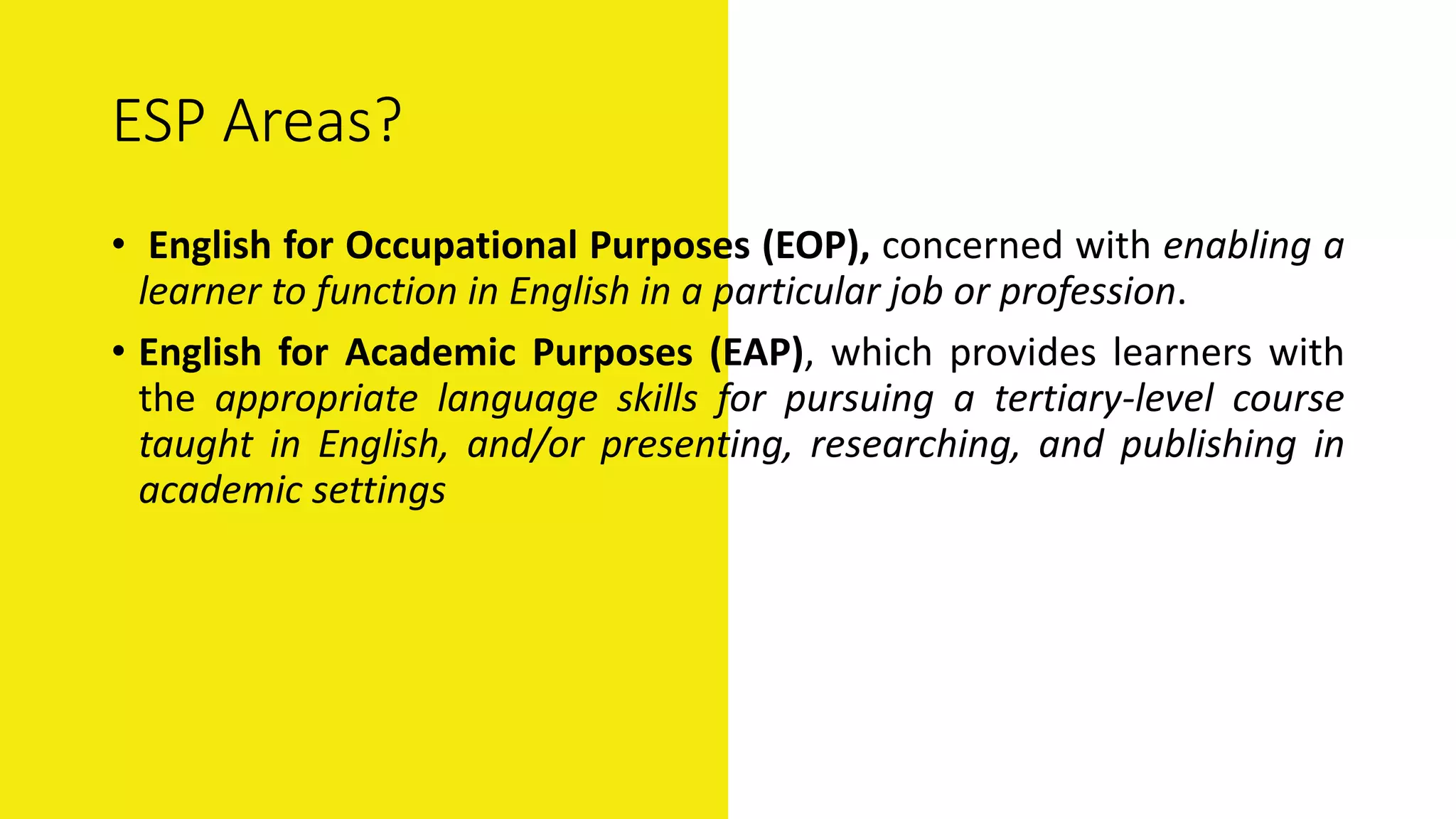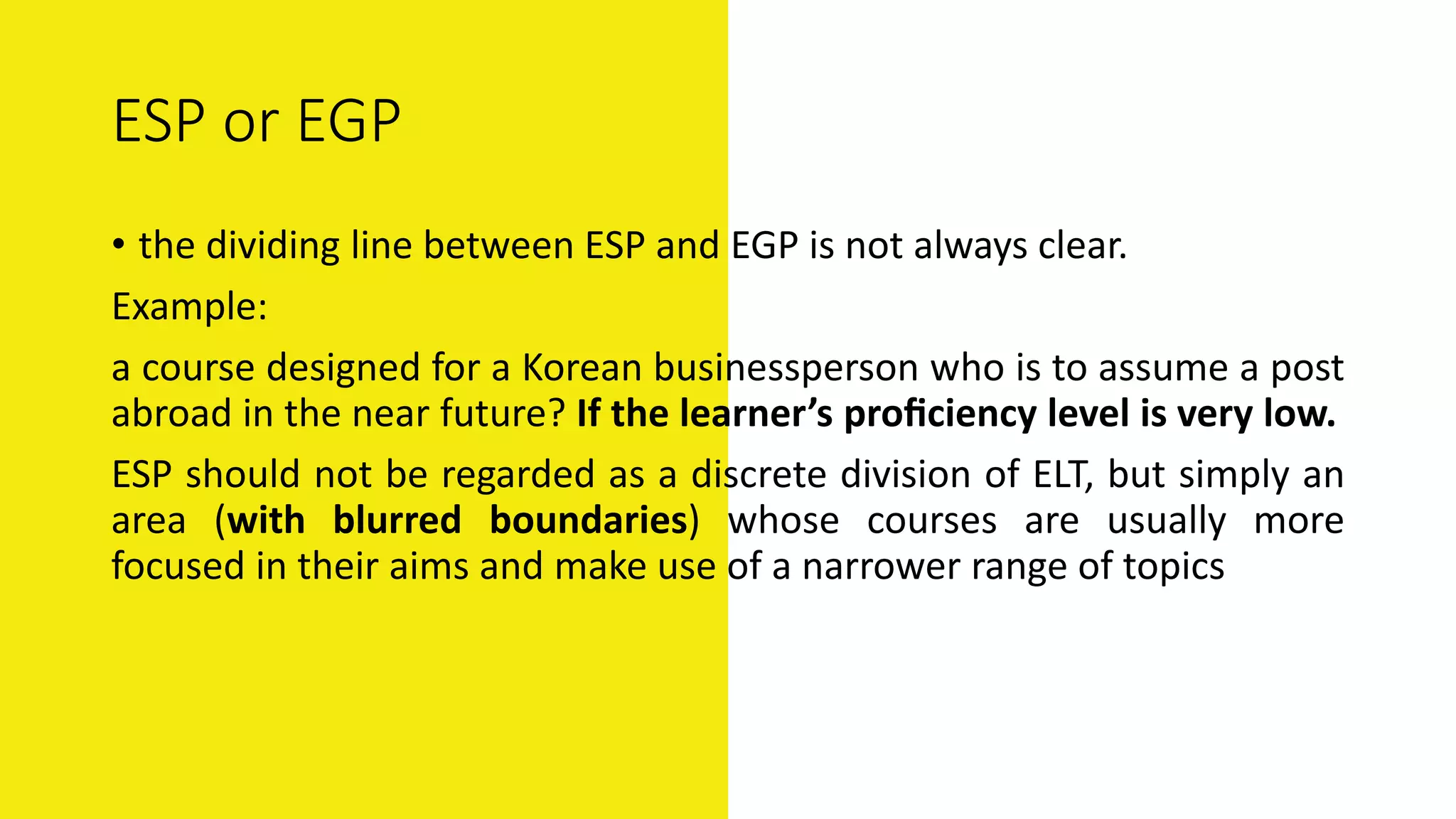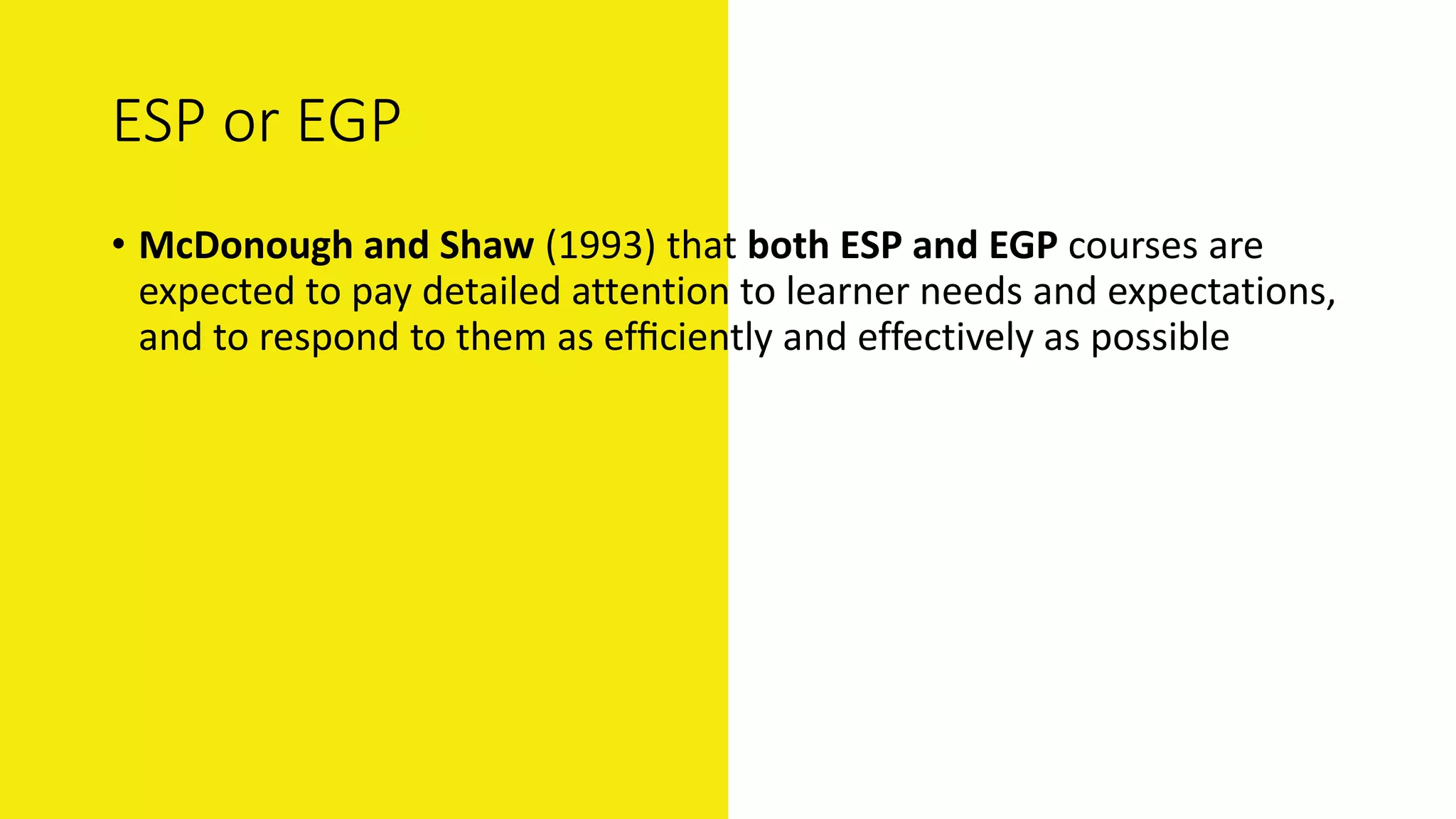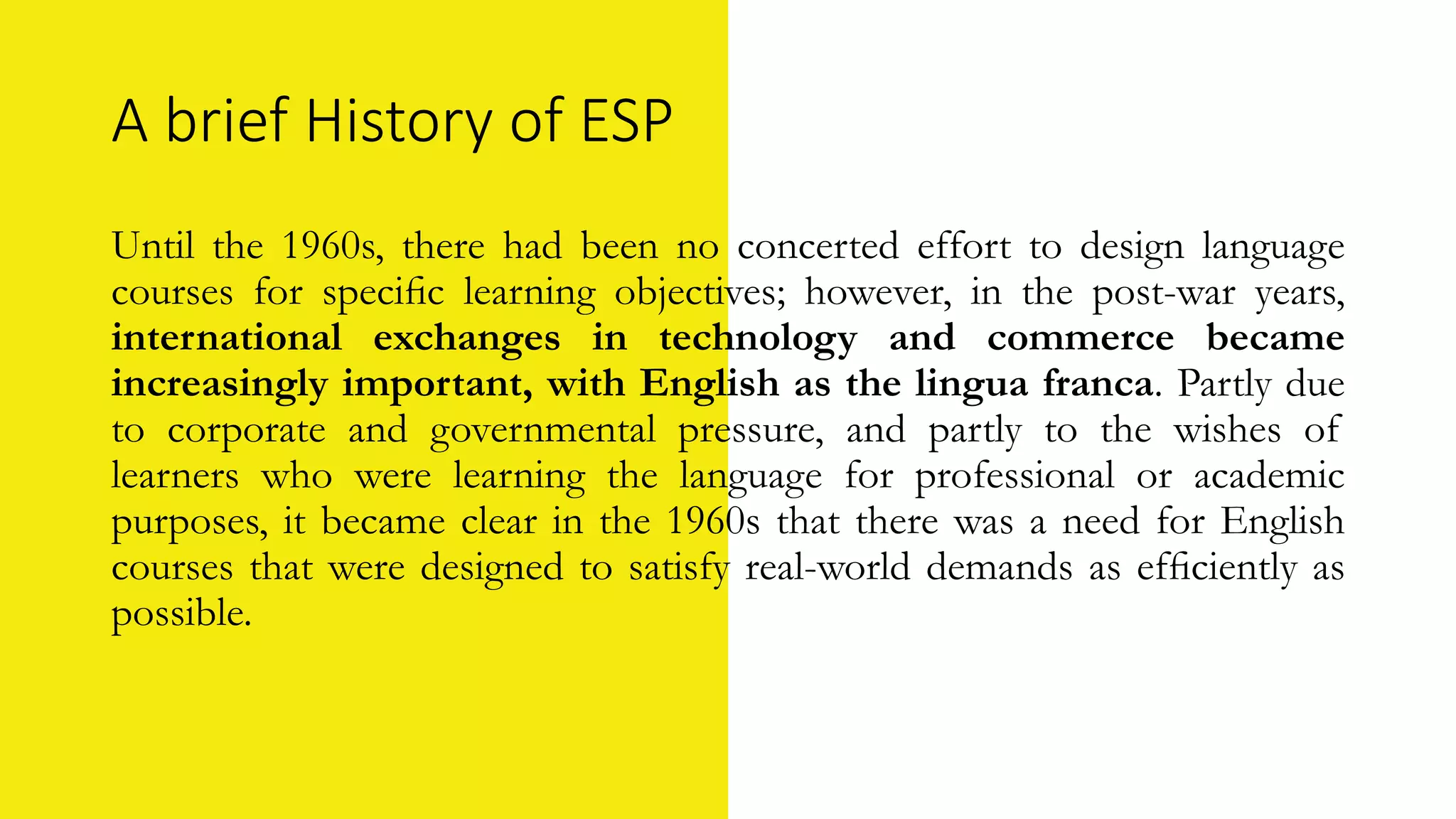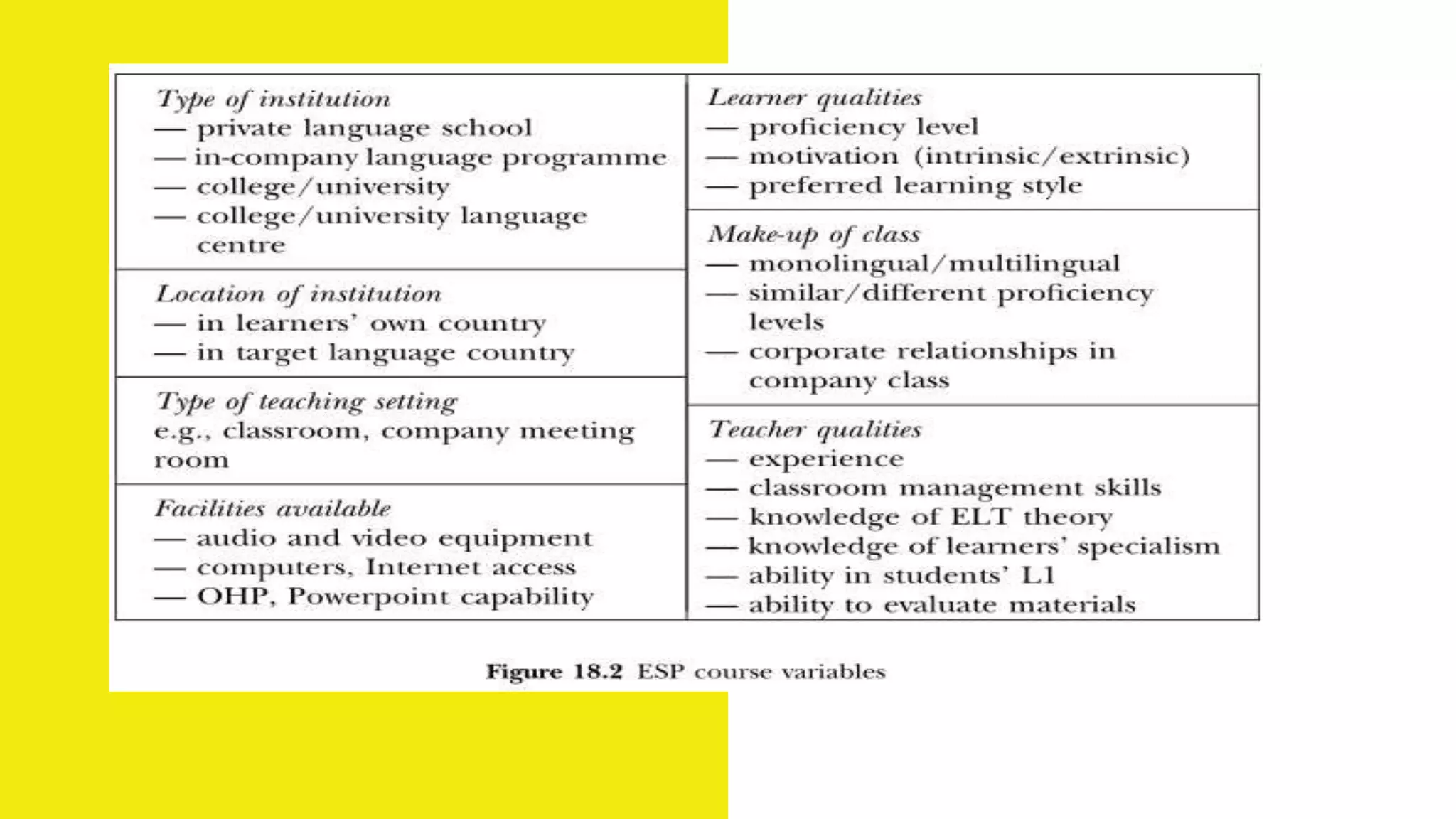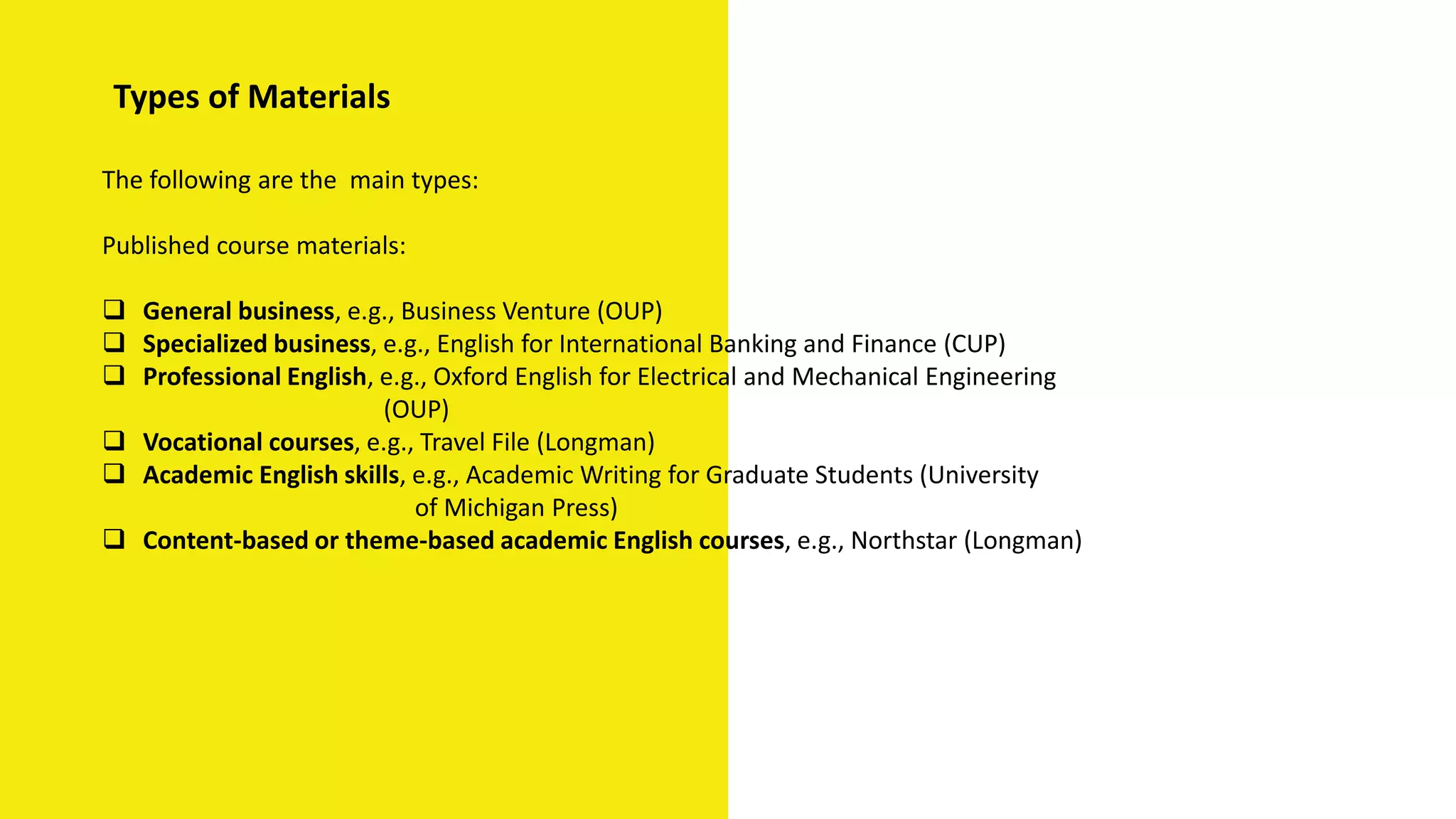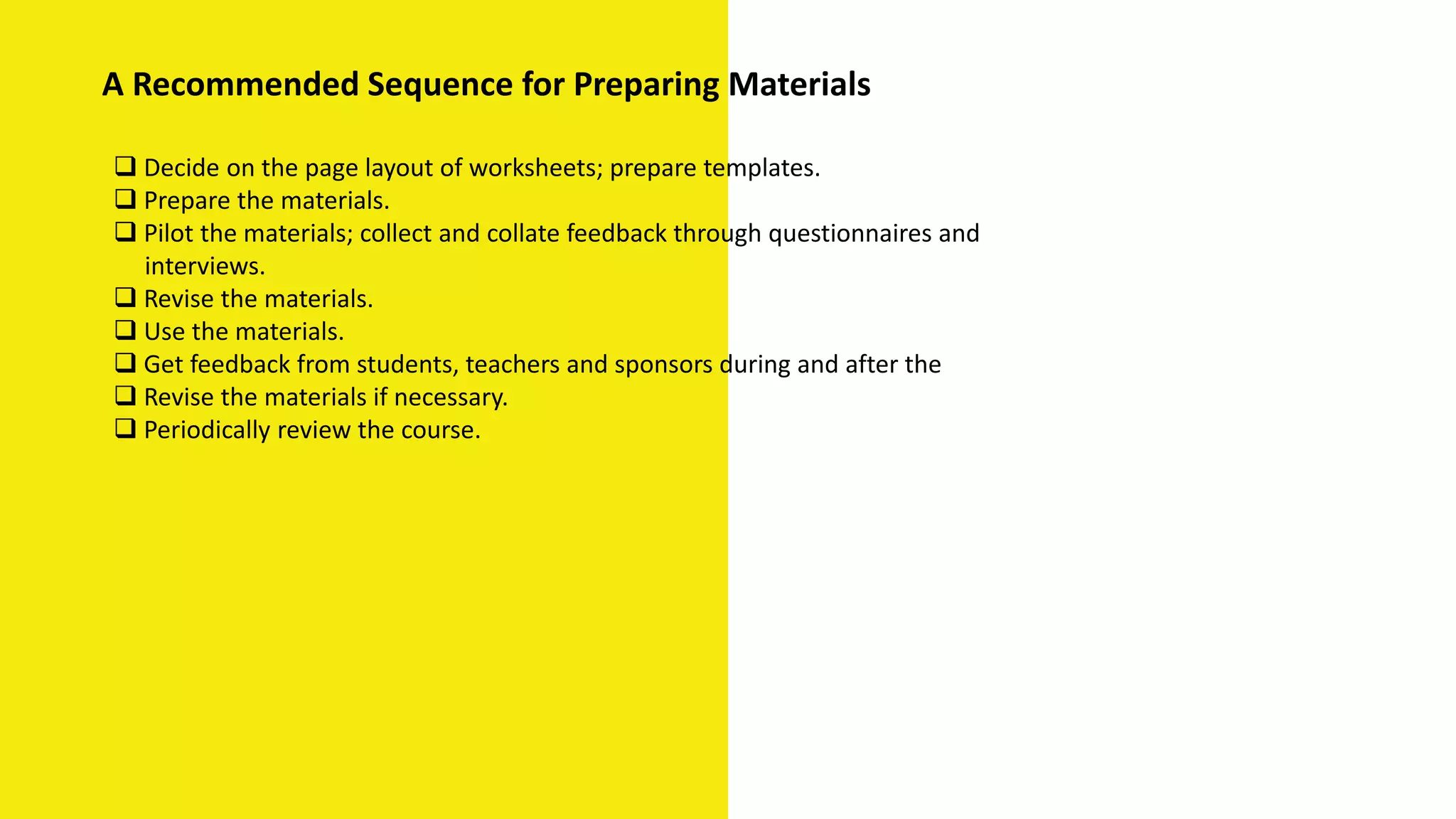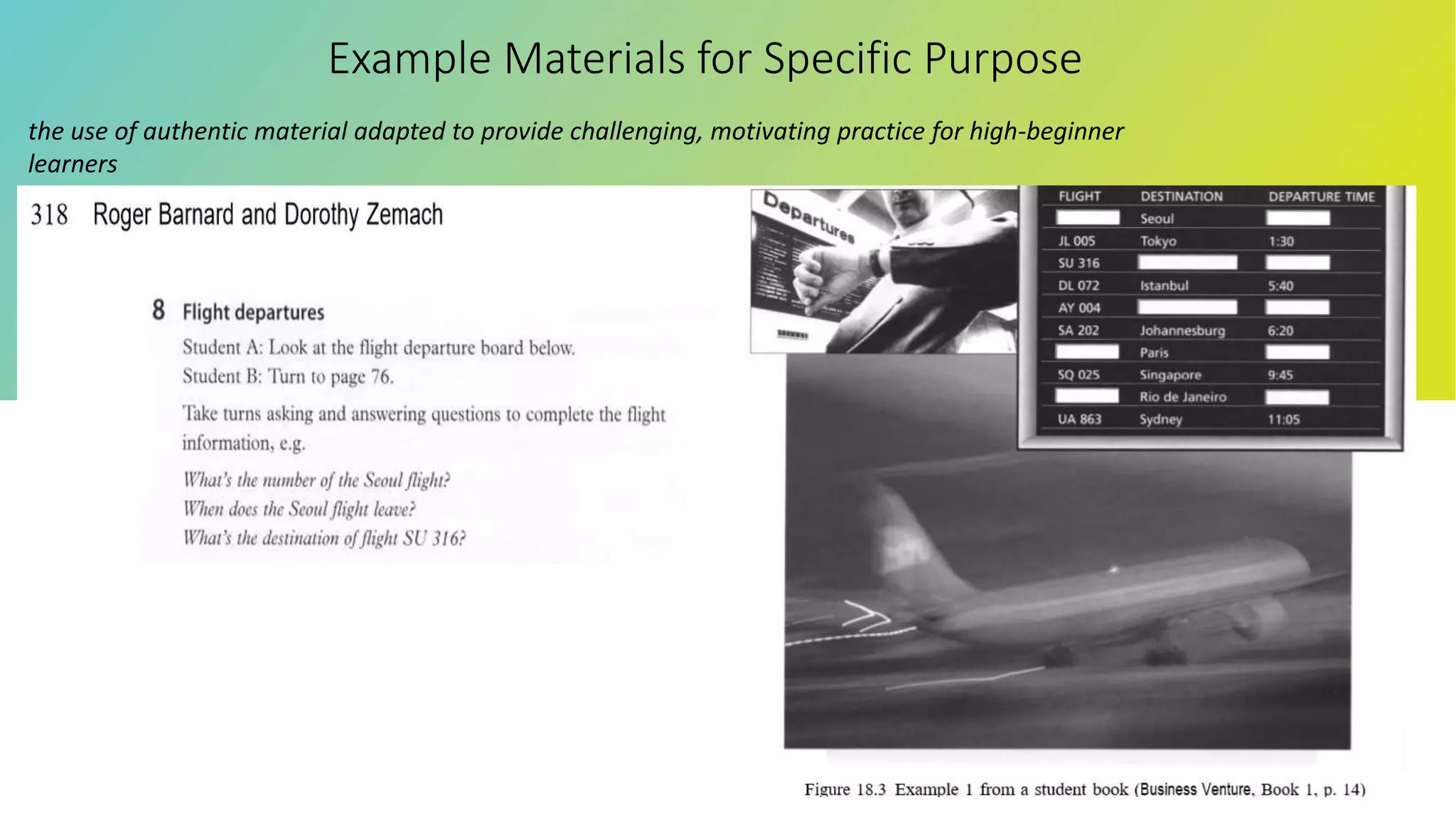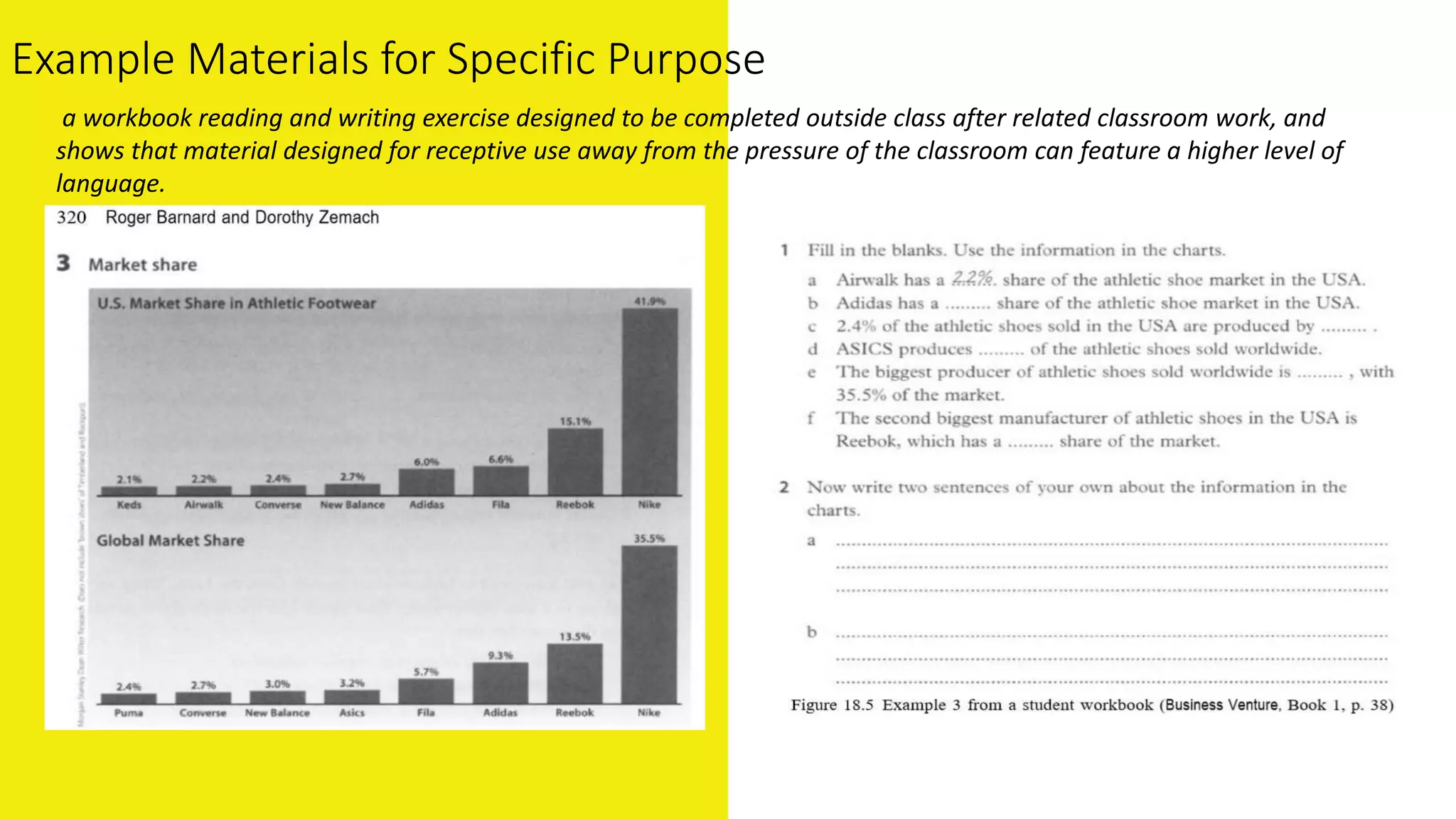ESP refers to teaching English for specific purposes like business or academic fields. It focuses on the needs of learners by selecting appropriate content and teaching approaches. ESP covers a wide range of topics but is defined by its aims being more focused than general English courses. There are two main branches - English for Occupational Purposes and English for Academic Purposes. Needs analysis plays an important role in ESP to determine what language skills and content are needed. Authentic materials from relevant fields can be adapted for ESP learners. Evaluation from both learners and teachers is important for improving ESP materials.




